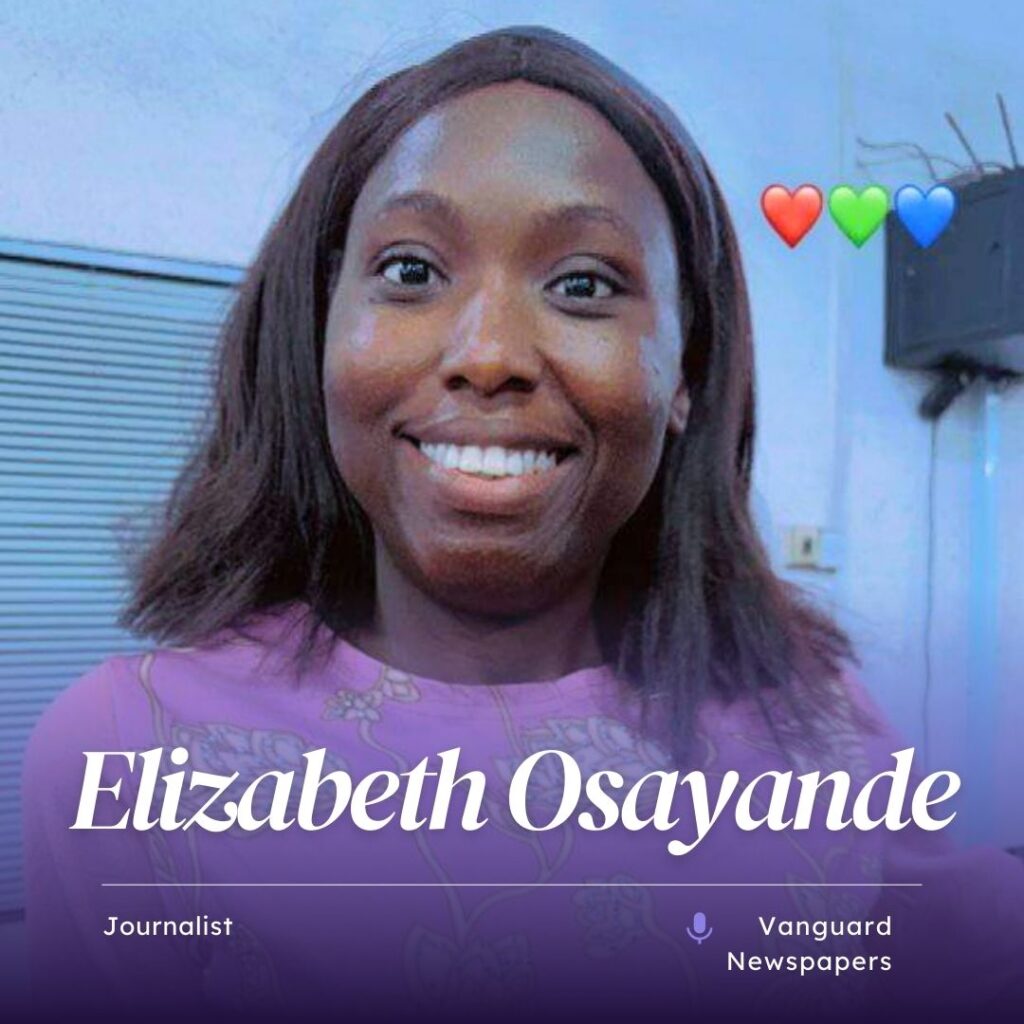By Theresa Moses

A silent revolution has begun in the social media as core professionals are challenged by the click bait virus while sensationalism reigns supreme over solution narrative and viral contents rather than fact-based reporting. A coalition of daring journalists is battling to liberate the media from the grips of mediocrity. They are motivated by a strong dedication to the truth and a love of crucial storytelling. The survival of our democracy itself is at risk in this battle for the essence of journalism. The stakes are extremely high. In the trenches of modern journalism, courageous storytellers are waging a vital war against the trivial and the mundane, fighting to preserve the integrity of a profession that helps us appreciate our political, economic and socio-cultural environment and shapes our understanding of the world.
Balancing pressure and integrity
Elizabeth Osayande, a journalist with Vanguard Newspapers and Convener of Female Freelancers Network (FFN), believes that ethics are the backbone of journalism. “Constantly having the ethics of the profession at the back of their hearts” is the only way journalists can balance the pressure to produce click bait content with the need to maintain editorial integrity. However, she laments the fact that many journalists are unaware of the true essence of journalism, adding: “With the ethics of journalism at hand, one can find balance in the work they do. But it is quite unfortunate that some journalists do not know what journalism entails.”


Izuchukwu Christian Ahuchaogu, a seasoned Editor at Truetells Nigeria, echoes Elizabeth’s sentiments. He believes that click bait is a sign of a lack of meaningful content and that journalists must be creative enough to produce engaging stories that attract and retain audiences. “Journalism is about telling interesting and objective stories, thereby educating and informing the people. When a journalist relies on click bait, it means that they don’t have meaningful content to generate original views. People on the Internet are hungry for information and entertainment; a journalist must be creative enough to produce content that will attract and keep the audience on their platform. There is always news in the news; there must be an angle that a true journalist can take to producing content that is attractive and readable to enable him to keep his audience.”
Creating click bait makes a media platform lose editorial integrity and should not be encouraged, he warns.

A veteran journalist, Okosun Dennis, Associate Publisher and Contributing Editor at Nationalwire, paints a grim picture of the current state of journalism. He believes that the pressure to produce click bait content often compromises editorial integrity while sensationalism attracts undue advantage.
Innovative storytelling
In a crowded media landscape, innovative storytelling techniques are crucial to standing out. Ahuchaogu swears by the 5Ws and H practice, which ensures that every story answers the essential questions of who, what, when, where, why, and how. “Another important storytelling technique is to know your audience. Who wants to hear your story? Who will benefit and respond the strongest? To create a compelling story, you need to understand who you are talking to in order to convey the message in the right way.”

Despite these challenges, Okosun remains optimistic about the future of journalism. He recommends breaking long stories into segments, using simple narratives and descriptive storytelling to engage audiences. “First and foremost, breaking a long story into segments or sub-titles and employing a simple narrative style devoid of complexity can engage the audience more. Also, descriptive style which will make readers attached to the story, are techniques to engage your audience.”
Osayande advocates collaboration as the linchpin for journalistic success in the digital age. She eloquently puts it: “The future of journalism is collaboration. If you want to run far, go alone, but if you want to run well, go with a group. We need collaboration or journalists will be under much pressure.”
Collaborations and future opportunities

As the media landscape continues to evolve, collaborations between journalists, creatives, and brands will become increasingly important. These partnerships can bring together diverse perspectives and expertise, resulting in high-quality content that informs, educates, and entertains. However, they also present challenges, such as maintaining editorial integrity and avoiding sensationalism.
Osayande emphasises the power of humanising stories to captivate audiences, urging journalists to join forces with creatives and brands to craft compelling narratives that resonate with readers.
Ahuchaogu stresses the need for collaboration among journalists, creatives and brands to produce impactful content. “Journalists, creatives and brands must work together because the journalist needs information for creatives and brands to better inform their audience or readers. The opportunity of a journalist collaborating with brands and creatives benefits both parties, as the journalist will inform and educate the people on what the brand stands for, and the brand can also reach the people through the information provided by the journalist. Brands will always need journalists to project their businesses and information to a wide audience, which they need for the business of brands to thrive.”

However, Okosun envisions a future where these collaborations galvanise competition, instigate robust editorials, and ultimately lead to the delivery of high-quality stories that transcend sensationalism. “In this era of ‘copy and paste’ journalism, working with creative minds and brands will engineer some journalists to churn out good stories. It will make more journalists less sensational by reporting accurately on those brands and the creative ingenuity of content creators.”
In conclusion, with a sobering reflection on the challenges journalists face in maintaining editorial integrity, the battle is far from over, yet it is ripe with opportunities for collaboration and innovation. To survive, creative writers must embrace innovation, collaboration, and niche audiences. Corporate organisations, brands, and PR agencies must also engage creative writers to produce compelling content rather than relying on “copy-and-paste” press releases.
As professional journalists navigate this complex landscape, they must remain steadfast in their commitment to ethics while embracing collaboration as a catalyst for impactful storytelling. Through collective efforts and a renewed focus on quality journalism, the industry can reclaim its integrity and deliver stories that inform, educate, and inspire audiences worldwide. By doing so, we can reclaim the media landscape, restore the integrity of journalism, and produce high-quality content that makes a difference.
Share your story or I Witness Reports with us 24/7 via SMS/Whatsapp: +234(0)8072022024, Email: gatmashblog@gmail.com, follow us on our social media platforms: X (formerly Twitter), Instagram, Facebook: @Gatmash, and subscribe to our YouTube channel: Gatmash TV.
Gatmash News is one of the most sought-after news portals, with an increasing audience and exclusive breaking news and reports across the globe. Plus more. Website: https://gatmash.com
For ad placement, contact us today via email at gatmashblog@gmail.com or call our hotlines at +234(0)8072022024.












